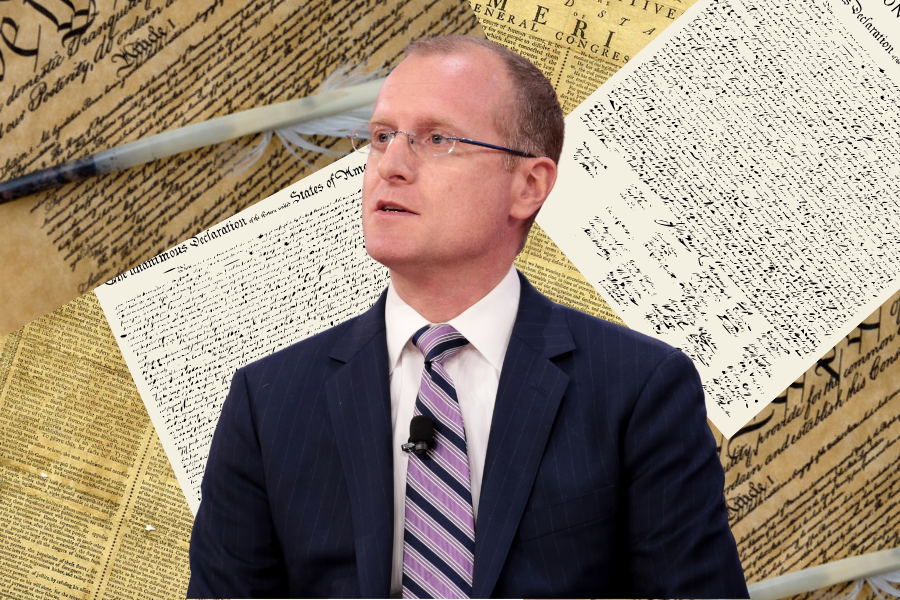Shayne C. Dunbaugh Journal Contributor
The events at Sandy Hook – coupled with last summer’s shooting in a Colorado movie theatre – have incited a renewed discussion on the current practices of gun regulation within the United States. These events have catalyzed a nation to bring justice, not only to the family members of those who were brutally injured, but to the entire country. It seems that an attack on this country is an attack on all, as we are all united in compassion for the shared feelings of altruism towards the victims.
Shooters in public locations arouse the fear that at any point in time we may find ourselves the victim in such an atrocious event. Adding to this scary possibility is the expanding proximity of these events to all of us: whether we have been on skiing trips to Colorado and stopped in for a movie or we know “somebody who knows somebody.” The point is, these incidents are extremely close to our hearts and preventing them from ever happening in the future is our aim.
Opinions from around the country are being weighed-in as legislators work fervently toward a solution indifferent of political agenda. The public eye has never been more in tune to Washington than it has in recent years. Legislators are being heavily scrutinized and every word analyzed – all the while, the public is applying pressure for an expedited “perfect solution.”
However, this is not the first time additional gun control methods have been debated by Washington. A ban on assault rifles and high capacity magazines expired in 2004 that was enacted 10 years earlier as a reaction to the San Francisco active shooter situation at 101 California St.
The Second Amendment states, “A well regulated militia, being necessary to the security of a free state, the right of the people to keep and bear arms, shall not be infringed.” As a result, it is clear that neither the Senate, nor the President, nor any citizen or foreigner, is acting within its legal jurisdiction to infringe upon gun ownership without due regard (due regard in this case is referring to legal citizenry, prior criminal activities, and other reasonable restrictions.)
It is obvious that guns are not simply going to disappear. Many law enforcement agents would refuse to enforce anything to the extent of infringing upon civil liberties: they are there to protect those liberties in the first place, working hand-in-hand with the citizen. So what exactly is the solution, and more importantly, what exactly is the enemy: The Constitution, the person, or the gun?
The facts and statistics may imply one direction or another, such as renewing the Violent Crime Control and Law Enforcement Act of 1994. Although, of the 6,000 gun related offenses nationwide in 2012, a mere 350 occurred using any kind of rifle whatsoever. Perhaps the heinousness of crimes in which assault rifles are used is so severe to provide legitimization of a renewed ban on manufacturing assault rifles and high capacity magazines, but the empirical evidence does not support it.
The entire nation is affected by the reality of the trend that an event will happen again, and the entire nation is determined to assuage that event’s occurrence. Perhaps America may already have a solution in a different instance.
At nearly every public place or event there is never a law enforcement agent too far away waiting to answer the call and protect the public. Yet in another place such as a school where the day’s events are public knowledge and constantly governed by the chime or gong of the intercom system, this place becomes the center of innocence and to the ill-willed, an easy target. It’s kind of similar to a plane where once the tires leave the runway no one can get off without the plane landing. The solution to ensuring the safety of the passengers, crew and the plane itself was to install randomly directed Federal Marshalls with specialized training as a sometimes psychological or a physical deterrent to any potential criminal activity that may be planned or attempted onboard an aircraft.
As for a movie event, as was the event in Colorado, there is no reason why law enforcement officers couldn’t reevaluate the venues lacking attention and remediate those situations. Localities can hire more law enforcement individuals, and in some cases, shift focus from revenue generating activities to a more dynamic force working with the public to ensure just ends.
A national tax on gun sales may provide funding for randomly appointed “substitute teacher marshals” or perhaps prior law enforcement now in the education industry may anonymously volunteer for additional training. A local tax or fee may be levied upon gun sales to facilitate additional law enforcement personnel hires or altered emphasis to police public gatherings.
Whatever the means to the solution, it is important we focus on the actual problem, rather than nonsensical peripheries, and that problem is terror. Just as terror was addressed by implementing anonymous Federal Marshalls on aircraft, so should terror be the focus here. Everyone agrees that the empirical evidence of America as the global leader in criminal activity needs to be addressed, but reaching a mutually acceptable agreement has, and will continue to be, the largest challenge to all of us.








The Suffolk Journal • Jan 25, 2013 at 1:30 pm
[OPINION] Aim to adress terror issues, not gun issues (by Shayne C. Dunbaugh) http://t.co/w7OKd6Mg